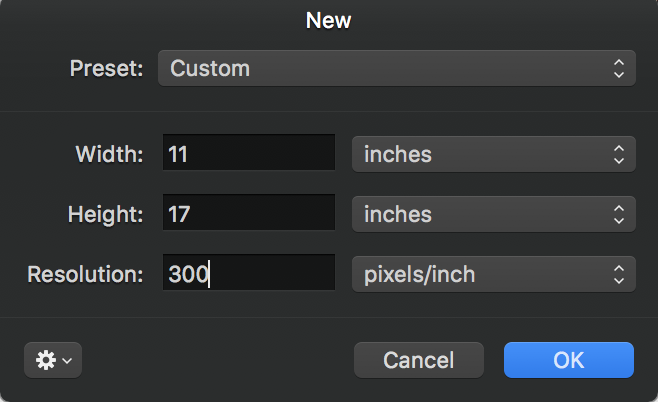CHALLENGE
Your final video should be an example of your best work. Take what you have been learning - either about shooting, editing, Motion (software), etc… and apply it to your final film.
You will need to complete some things as a group and some things as an individual. Please read carefully through this page to ensure you are checking off all steps and tasks.
STEP 1
Getting approval for your project.
It wouldn't be great if you got halfway through your project only to find out that the concept was not suitable for a final project. Book a conference with your local media arts teacher (that's me, Mr Moccio) and discuss your idea. No fancy presentation required, but you should all be prepared to answer any questions about your concept if necessary.
STEP 2
Scripting and plot outlines.
Now that your project has been approved, you will have the task of planning the story and the shoot.
You will script and storyboard your film using standard script writing format. For a quick-paced, informative tutorial on how to format your script, view this video:
https://www.youtube.com/watch?v=XZszextv6yE
SAMPLE SCRIPT Check out a sample script here
There should be two pages of script (only 2 pages). You must submit this script before your final product. It will be due January 16, 2019. It does not have to be 100% accurate to how your movie plays out. Remember: creative projects can change through time.
Group responsibilities: The group needs to submit 1 copy of the script. Be sure to include everyone's names on the script. Please share in Google Drive with everyone’s names included with Mr Moccio @ eric.moccio@dsbn.org
Individual responsibilities: You should submit individually (in your Google Drive Media Arts folder) your individual plot summary and answer the following questions.
Plot summary: simple paragraph explaining the concept/plot of your film. What is your planned storyline? Who are the main characters?
What role will you play in the production of this film? What are your primary assigned tasks? How will you contribute to this film project?
20 MARKS ALLOCATED FOR THIS PART OF THE FINAL PROJECT.
STEP 3
Filming
You will need to film your scenes. Try new things: use a tripod dolly, try the “pico dollies” we have in class, try the slider… try to light a scene with the lights. Try something new to push yourself. Be sure to get all of the footage you need to make a fantastic final product!
Group Responsibilities: You should all be making every effort to be present for your shooting sessions. You should be contributing to this process of capturing your shots, planning the shots out, directing the actors, talking through the scenes.
STEP 4
Editing
In the editing software, piece together your film. The final product will be 5-7 mins in length. Of course, this does depend on the concept you are filming. Did you plan on using special effects in your final film? Think about a special look for your footage. Think about using text to make your credits and introduction credits.
Group responsibilities: You will need to be contributing to the sequencing of the project. This means you are helping to order the shots appropriately to tell the story you are telling.
Individual responsibilities: In your Google Drive Media Arts folder, you will write a synopsis of the editing process.
How did you, as a group, come to a consensus about the final product?
Where there any disagreements? What clips/scenes/shots would you change?
STEP 5
Movie Poster & Final Export
Create a file in Pages that is made for an 11x17 page or use Adobe Photoshop or Pixelmator.
See Mr Moccio for details on how to set up your file OR watch this quick tutorial in Pages: https://youtu.be/UuOjLq0UV9Y
The dimensions for your poster in Photoshop / Pixelmator should be. Be sure (as pictured) to select “inches” and not “pixels”:
Your poster should be a picture or a graphic that somehow represents your film.
The poster file is due: January 21, 2019. Be sure to export your final movie file from Final Cut Pro. If you need help exporting, see Mr Moccio. Hand it in on time by January 24, 2019.
Group Responsibilities: You are responsible as a group to submit your final product.
REQUIRED ELEMENTS TO BE INCLUDED IN YOUR FILM
1- TITLE SEQUENCE
Should set the mood for your film. Does it need music/sound? Should it be flashy or simple? Will you use Final Cut Pro / Motion? Use a template, if you must/want.
2- END CREDITS
Again, similar to the title sequence. Final Cut Pro and Motion are both good programs to try.
3- DIALOGUE
There must a scene that includes dialogue. It can be a single character talking to himself or two (or more) characters together. Don’t forget the 180 rule (Look it up - we talked about it in class) Don’t forget - you can use audio equipment. You can use the lighting kit.
EVALUATION
Storyboard and Script: 10 marks
Movie Poster: 20 marks
Final Film (Using rubric from Media Arts website) 50 marks
Observations: 10 marks
Observations? We will be using various criteria to evaluate your contribution and participation in this project.
Project Preparation / Planning - Students goes above and beyond in engaging in the process of filmmaking. Time spent on the task consistently. The film projects moves forward consistently.
Fundamentals - Student demonstrates excellent use of media skills and technology. Through their ability to organize files, set schedules, gather and use feedback, student demonstrates the principles of teamwork, organization, and filmmaking that are essential in this course.
Ideate - Use of planning skills (e.g. formulating questions, generating ideas, gathering information, outlining, organizing an arts project, brainstorming, blocking, sketching
Communication & Collaboration - Helping to create and support an environment where one can "Make Great Films".
CONCEPTS
Movie Spinoffs
Pick a film and write a new scenario (shorter than motion picture length of course!)
Make up your own story. Action / Drama / Comedy






